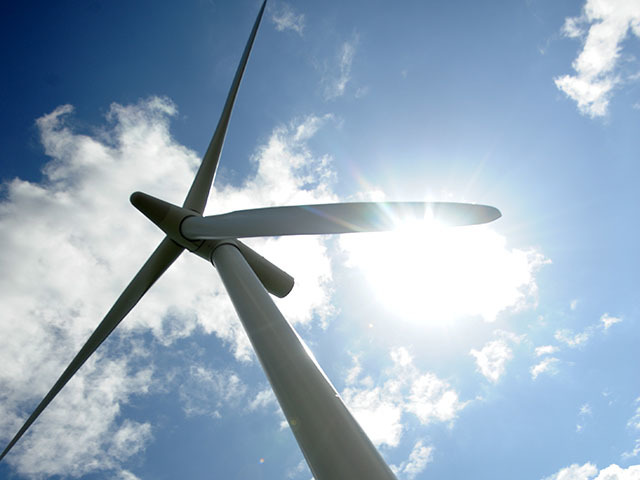
The islands could be in line for scores of new windfarm schemes after the UK Government confirmed plans to offer special incentives.
Energy Secretary Ed Davey announced yesterday that green energy projects on Orkney, Shetland and the Western Isles would be entitled to a higher subsidy than those on the mainland.
But last night he was under fire from campaigners who claimed big firms were “raping” the islands and turbines were killing rare birds. They also said the benefits of windfarms were exaggerated.
Mr Davey has proposed a “strike price” of £115 per MWh generated from onshore wind, which is more than the £100 offered in the rest of the country.
It will be the first time a different rate has been given to a particular area, and is expected to pave the way for many new turbine developments in the northern and Western isles.
A study commissioned this year by the UK and Scottish Governments showed major investment – and the potential for 10,000 jobs from investment in wind, wave and tidal energy schemes – was being held back because of the high cost of transmitting electricity.
Mr Davey confirmed the new strike price, due to be finalised in December, during his speech at the Lib Dem conference in Glasgow yesterday. He said: “It gives me great pleasure to make this announcement here in Scotland. I am publishing new plans to unlock the green energy promise of Scotland’s islands.”
Niall Stuart, chief executive of Scottish Renewables, welcomed the move. “This is an important step forward by the UK Government after years of campaigning by the renewable energy industry and the islands councils,” he said.
“While the move does not reduce the cost of connecting to the grid for projects in the Scottish islands, which we understand to be six or seven times higher than charges on the mainland, it does at least help new onshore wind developers mitigate against these high costs.
“We will now be working with our members to ensure the proposed support is enough to make projects on the islands economic and for investments to go ahead.” He also called for similar certainty for the marine energy industry.
But tour operator Les Mac an Ultaigh, of Balallan on Lewis, said he believed the economic benefit of large-scale windfarms on the islands was grossly exaggerated and they were harmful to tourism and wildlife.
He said: “I’m for community windfarms where the local community are getting the benefit of them but the multinational windfarms are just raping the area, killing golden eagles and other rare birds while bringing little benefit to locals. If we generated our own electricity it would be great but I don’t see the point of transmitting it great distances.”
He said he thought the subsidy was a small increase which would struggle to overcome the stumbling block of the cost of undersea cables.
Kevin Learmonth, a campaigner against the 103 turbine Viking Energy windfarm planned for Shetland, said: “The difference between £100 per megawatt and £115 per megawatt doesn’t go anywhere near meeting the costs of island windfarms.
“The building and operating costs are nearly three times what they are on the on the UK mainland.”
He added: “It’s not the government paying these subsidies, it’s going to be consumers.”
Pat Wells, anti-windfarm campaigner and Alliance Party of Scotland member, said: “This paints a very gloomy and depressing picture for the landscape of Scotland’s islands, as the existing situation does for the rest of our mainland landscapes.
“The way things are going, everywhere is going to be blanketed in wind turbines unless we manage to get a moratorium.
“I suppose they see the islands as having a bit more space and capacity to take more turbines as there is certainly little space left further south. I suspect they are hoping there will be less opposition on the islands.”
Recommended for you

